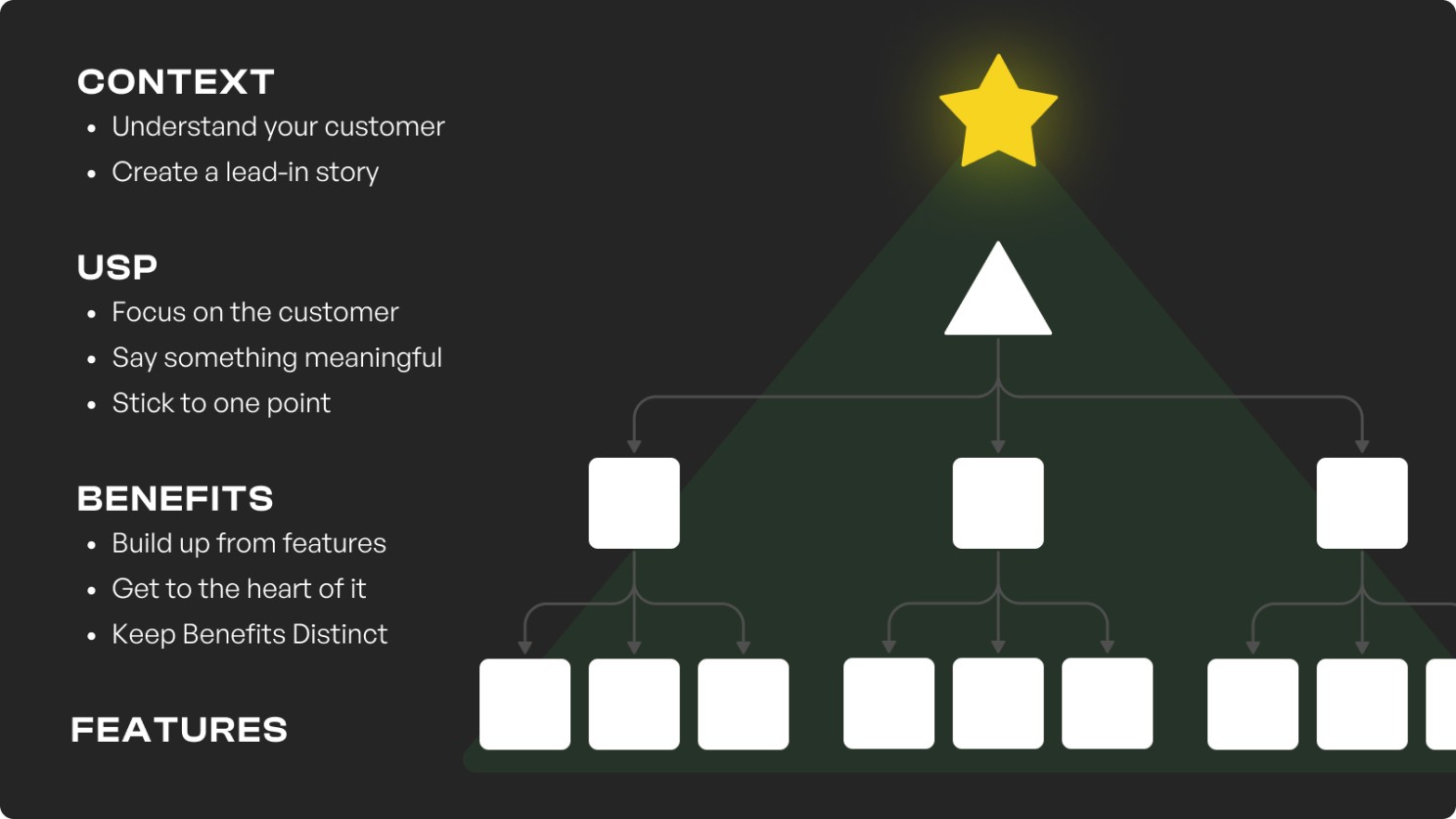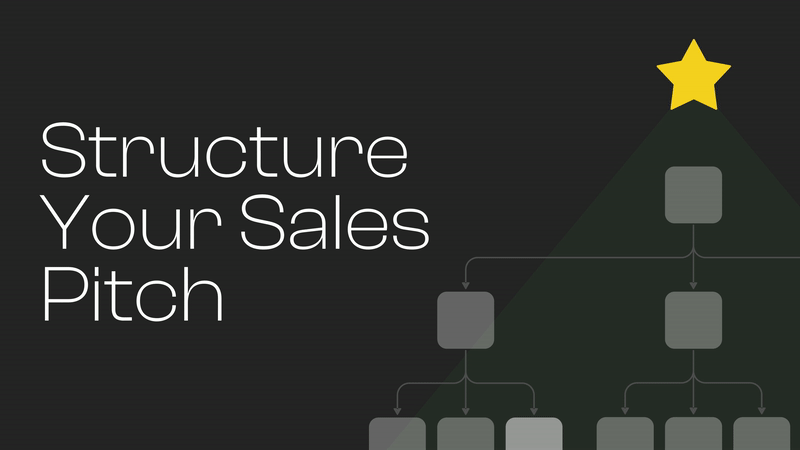The sales pitch is the core messaging behind your product or service, whether you're pitching in person, with a deck, or on a website. It's an invaluable asset that streamlines the way you sell. But two challenges often stand in the way
- Strategically, we're not clear about why we're saying what you're saying. As a result, our pitch becomes product-focused instead of customer-focused. We lose focus on the customer, falling back on what your product can do instead of what it can do for the customer. Budget airlines don't talk about how their 747s have a range of 14,000km, they talk about how you can get from A to B for the cheapest price.
- Tactically, we're unsure of how to say it. Our service/product may have an overwhelming number of benefits, features, and details. In the midst of communicating all that, we end up making many points, but not getting the point across.
Ok, so we have to be customer-focused and clear. Case closed? That's easy to apply to a single line of copy, but weaving it into an entire pitch is easier said than done. That's why I'm going to stop talking here and just show you.
Christmas Tree Framework
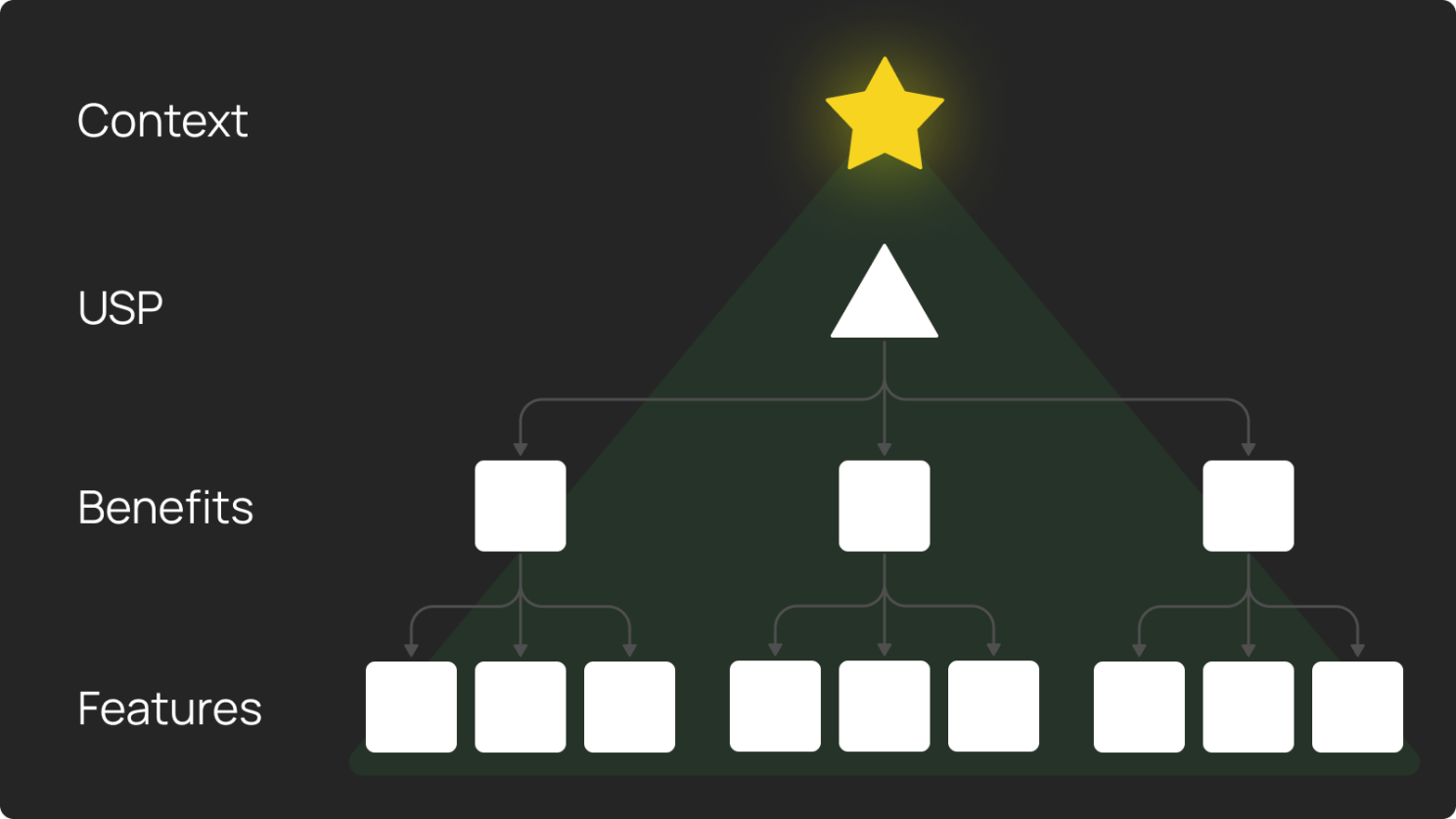
Imagine a Christmas Tree where the star on top represents your customer’s context and the tree represents your messaging. This framework orients you toward the customer and helps you speak to them with a concise and compelling pitch.

This draws heavily from Babara Minto’s Pyramid Principle, a communication framework I used extensively when I first began working on sales pitches. The framework I’m proposing here, however, has been adapted to suit a B2B sales/product marketing context.
How it Works (Case Study)
Imagine you're in charge of creating a sales pitch for Minute, an online meeting app. Cue the infomercial:
Ever find yourself distracted in a meeting because you’re too busy taking down notes? I do. That’s why I made Minute, an app that helps people record, transcribe, and make sense of their online meetings.

🧭 Before you go into your product/service, you need to create the right contextual frame for your customer to appreciate what you do for them. At the end of this step, you should have a lead-in story that sets the stage for your product.
Understand your customer
Building a sales pitch without understanding your customer is like shooting an arrow without knowing where your target is. It doesn’t matter how skilled you are or how sophisticated your bow is if you don’t know what you’re aiming for.
Step into your customer's shoes and understand what they're thinking, feeling, and doing. One way to do this is to build a customer persona. Here are four main questions I ask when building one:

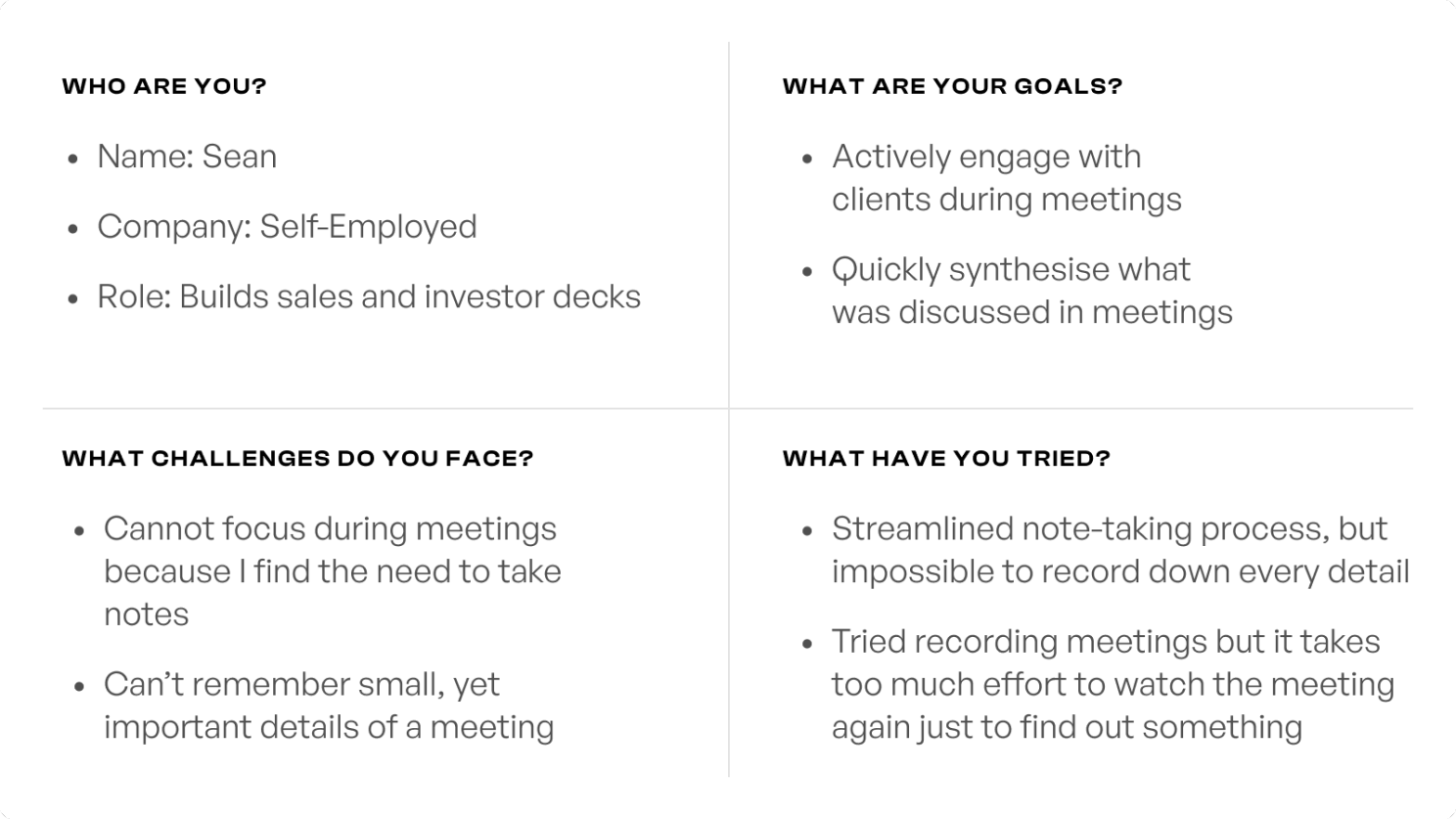
For simplicity’s sake, I just provided one customer persona. Usually, you'll have more than one persona and need to consider whether to construct different pitches for each persona. For example, if you’re running a job portal, you need two pitches to communicate to two different customers (job seekers vs hiring companies).
Create a lead-in story
Diving straight into your product sets you up to be that annoying friend that only talks about herself. Talk about them before you talk about yourself. Bring up goals they have or challenges they face. Even if the customer already knows what they want, there's no harm in creating empathy by showing that you understand how their context.
Now that you understand what your customer is going through, you're in a much better position to set the stage for your product. Here are some ways you can create a lead-in story:

Bonus: Posing a big change can be a very effective way to set the context. Unfortunately, that is another article in itself. Andy Raskin has a great article on it.
Here’s how I’d do it for Minute:
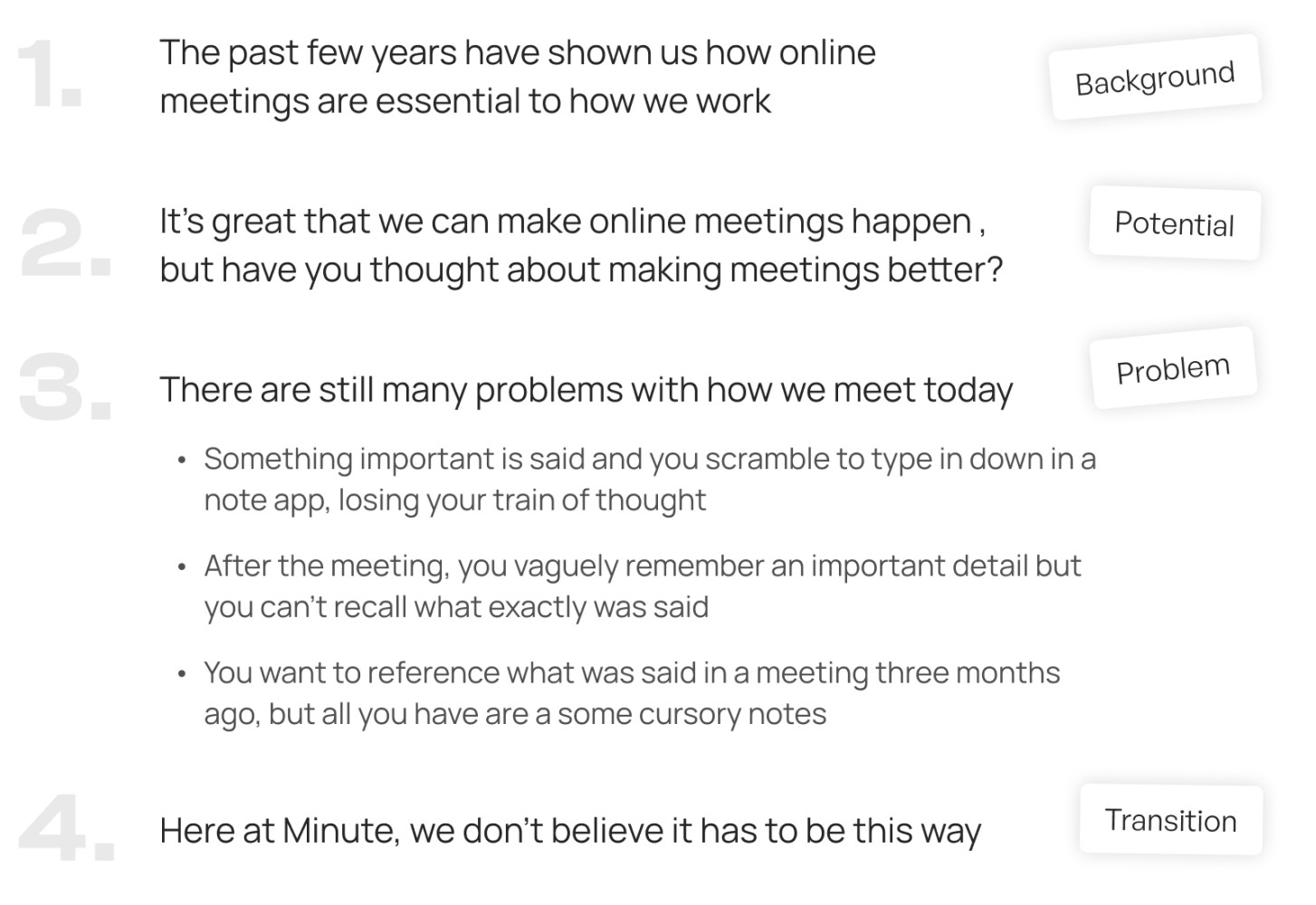
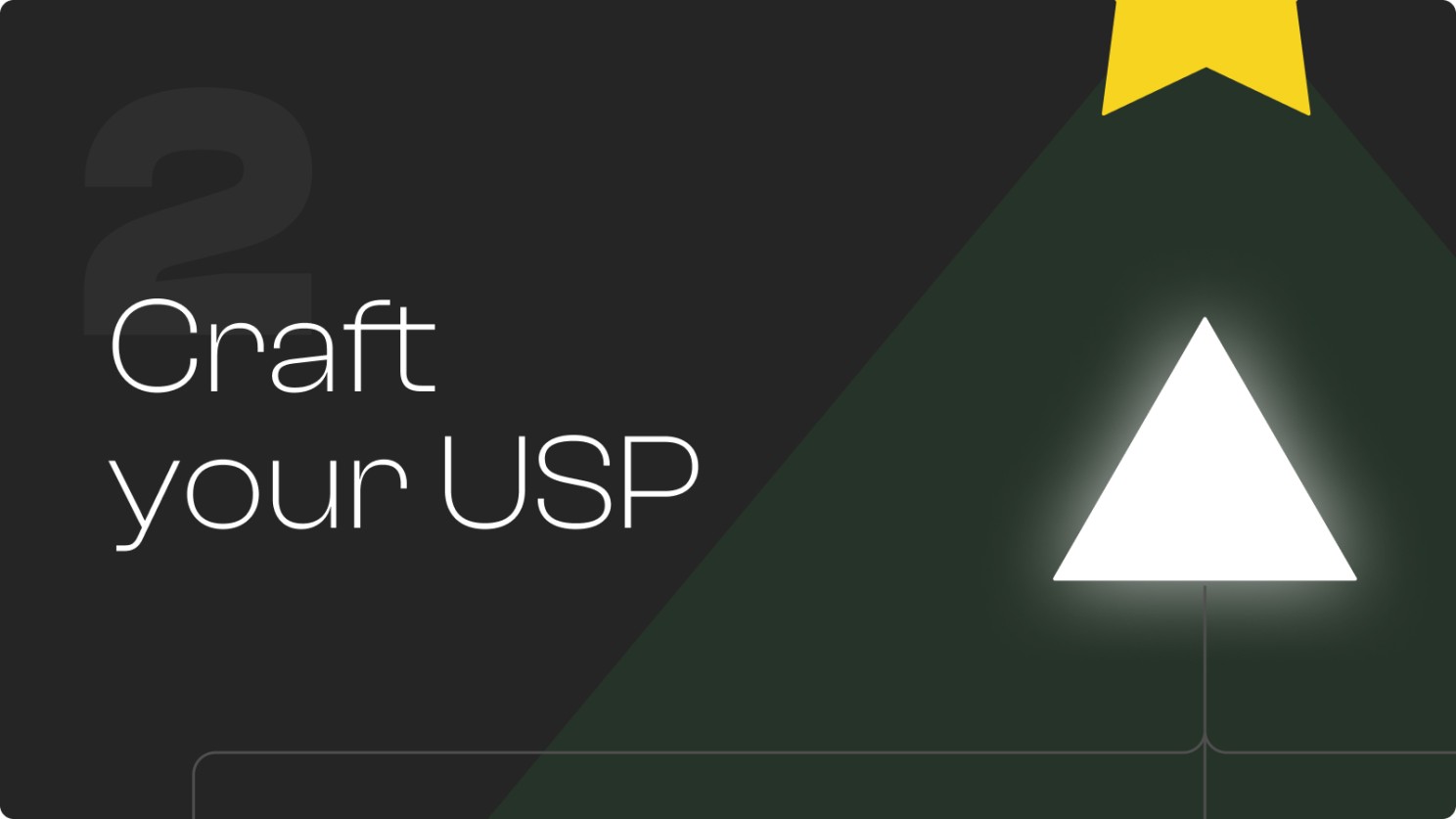
🧭 The USP (unique selling proposition) is the response to the lead-in story. How does your product “answer” the problems and possibilities you set up? Think of this as the concise, customer-facing version of your vision. At the end of this step, you should have a one-liner that encapsulates what you’re doing.
Focus on the customer
❌ “Minute is the smartest meeting app out there”
This doesn’t say anything about how you help the customer. Sure, being the smartest meeting app probably means that you will be able to do more for your customer, but they're not going to connect all the dots by themselves, especially if they don’t immediately see how you can help them.
Say something meaningful
❌ “Minute helps you have better meetings”
Even though this focuses on the customer, it’s too vague to be meaningful. What does better meetings mean? Does Minute help schedule meetings? Host them? Transcribe them? This turns out to be an empty point that doesn't convey much, if anything at all.
Stick with one point
❌ “Minute helps transcribe, summarise, and store all your meetings ”
This is meaningful and customer-focused, but it's too descriptive and generic. It’s a summary of your main features rather than your overall vision. Listing three distinct features defeats the purpose of having a point. Furthermore, if you’re in a saturated market, this will hurt your positioning because you’ll just be restating the basic features of your competitors.
Following all these tips leads us to this:
✅ Make the most of your meetings with Minute, your virtual scribe.
- Customer-focused. I talk about how Minute can help customers make the most of their meetings. This builds on my lead-in story because I imply that we are not making the most out of our meetings despite it being such a large part of our work.
- Meaningful. “Make the most of your meetings” is richer than “have better meetings” as it implies that 1. we’re not doing enough now, and 2. we can do more - building on the lead-in story we’ve established.
- One point. Calling Minute a virtual scribe rather than “an app that helps you transcribe…” helps me stick to one point by using an existing term that customers are already familiar with.
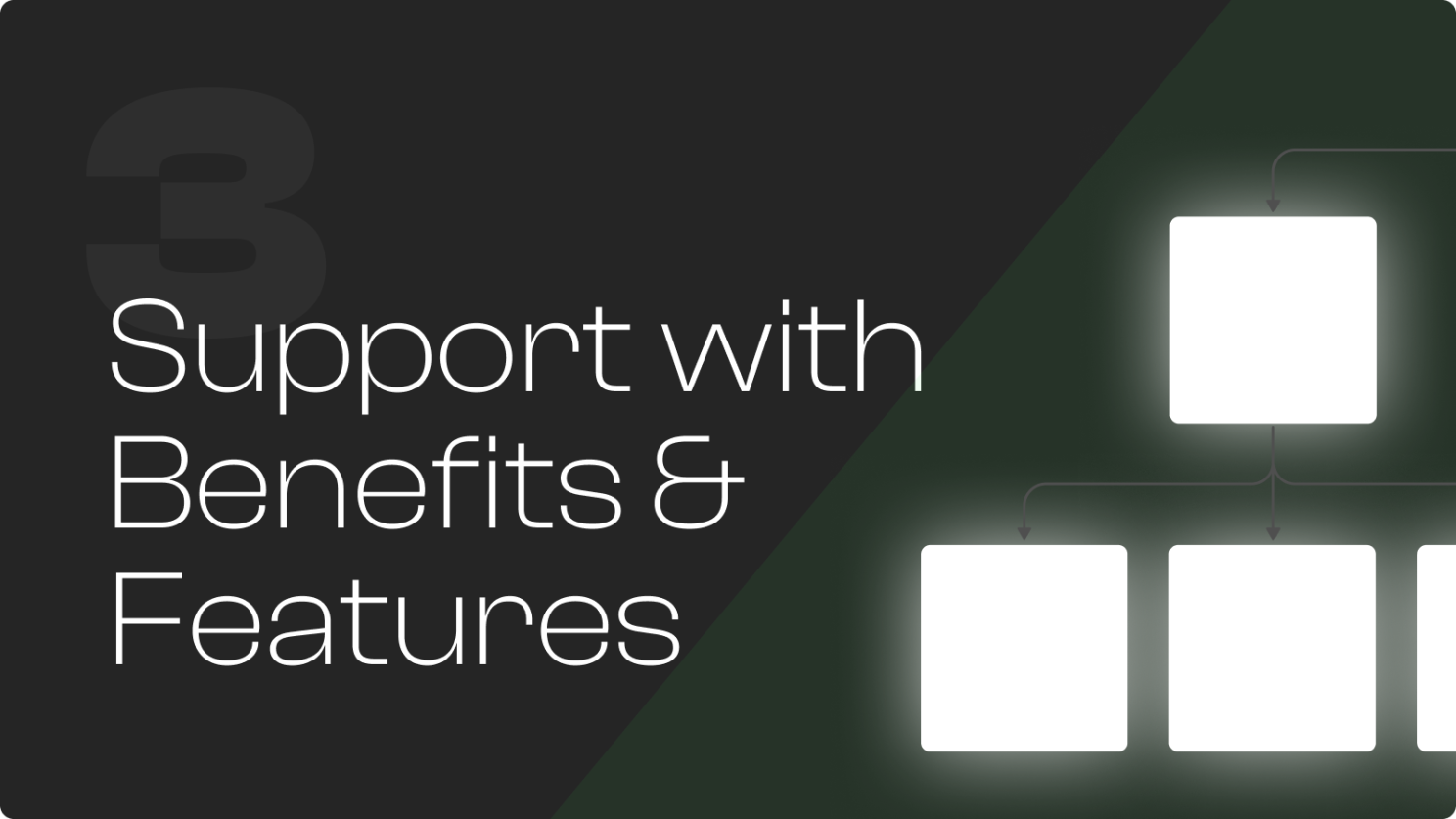
🧭 After reading your USP, your customer will probably be thinking "Okay, so how do you do it?" This is where you introduce the different ways you help them . At the end of this step, you should have 2-4 benefits that are supported by a set of features.
Build up from features
Benefits are built on what a collection of features can do for your customer. A good way to approach this is to group your features under 2-4 corresponding benefits. Doing this kills two birds with one stone since you end up organising the features as well.
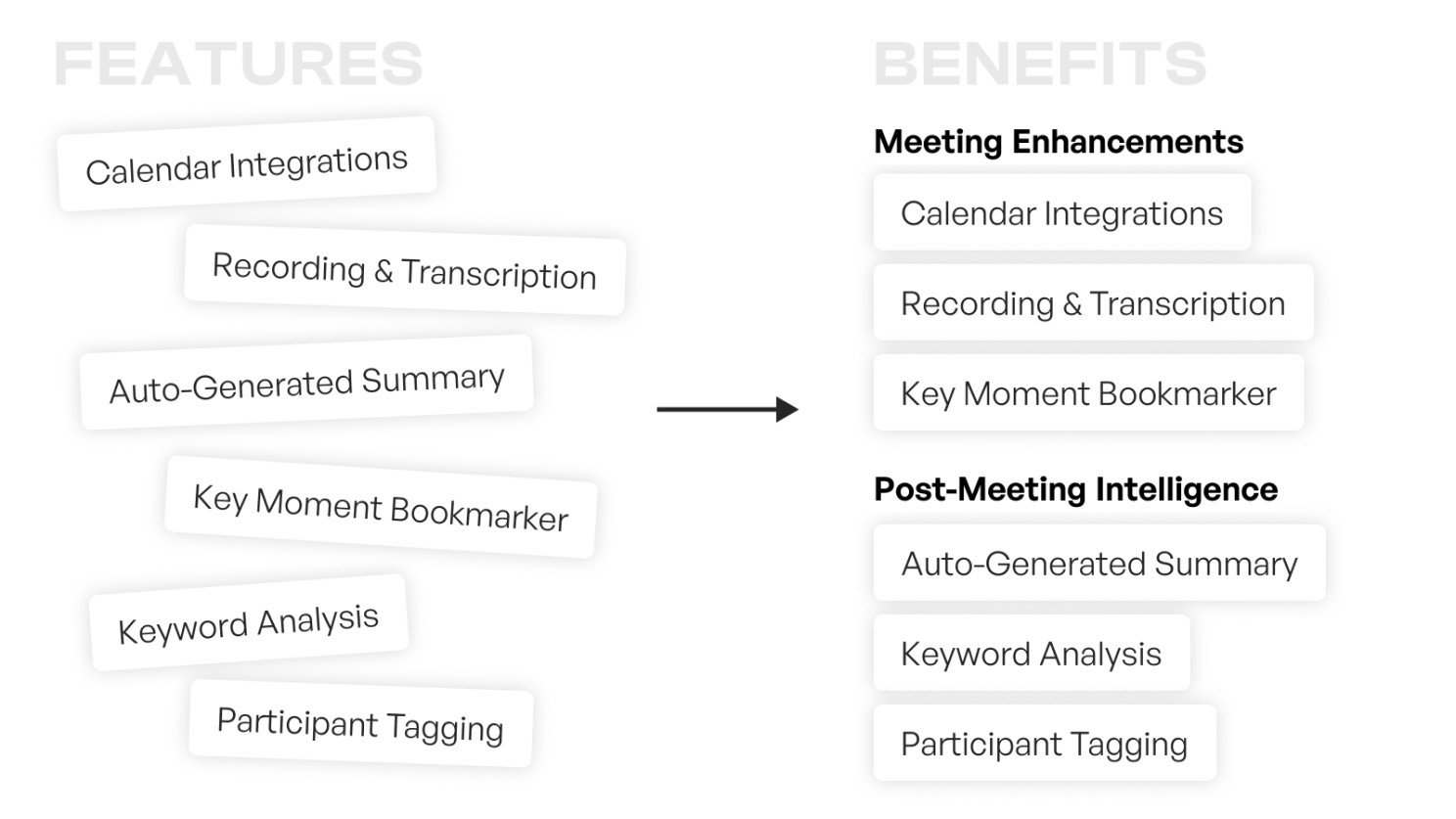
Get to the heart of it
Tell them exactly how it helps them. Terms like “Meeting Enhancements” and “Post-Meeting Intelligence” are too vague and keep them guessing. Here's how to get to the heart of it:
- Speak plain language. Nobody thinks “I need to enhance my meetings and adopt intelligent tools”. They think “I find it hard to focus during meetings and digest what was discussed”.
- Verbs > Nouns. Nouns are usually too passive and don’t show how your customer can benefit from what you're doing. “Make sense of your meetings” vs “Post-Meeting Intelligence”.

Keep benefits distinct
Your benefits shouldn’t be too similar to one another. Communicating similar benefits can be repetitive or confusing. Consider this example:

At first glance, this seems okay - one benefit is about focusing during meetings while the other is about taking notes. But these are intertwined. Whether you can focus during meetings depends on whether you are taking notes or not. The overlap between these two benefits makes it repetitive and potentially confusing for your customer.
To tiebreak, I went with the first option because it subsumes the second. Focusing on meetings is a larger idea that note-taking is just part of.
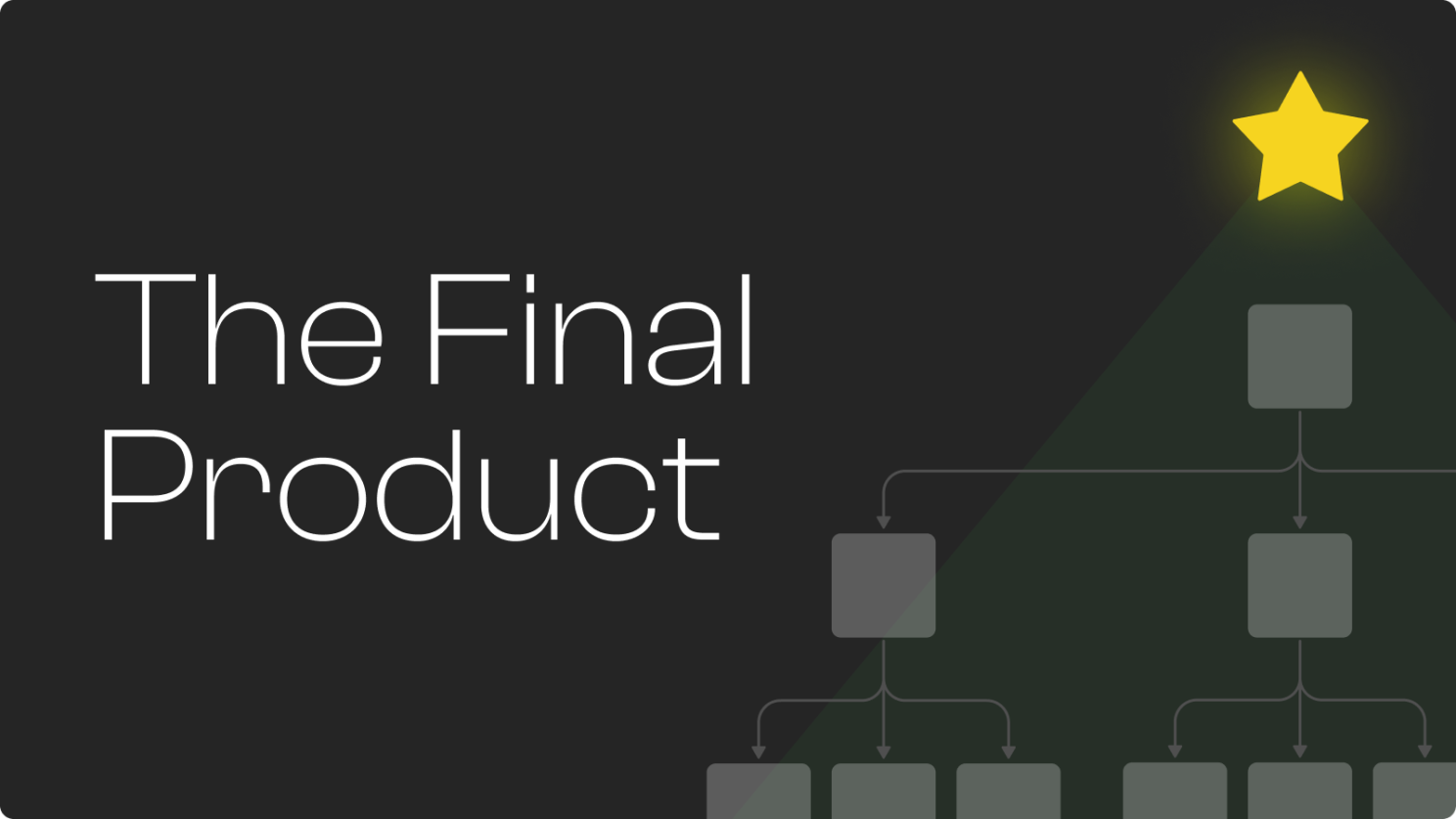
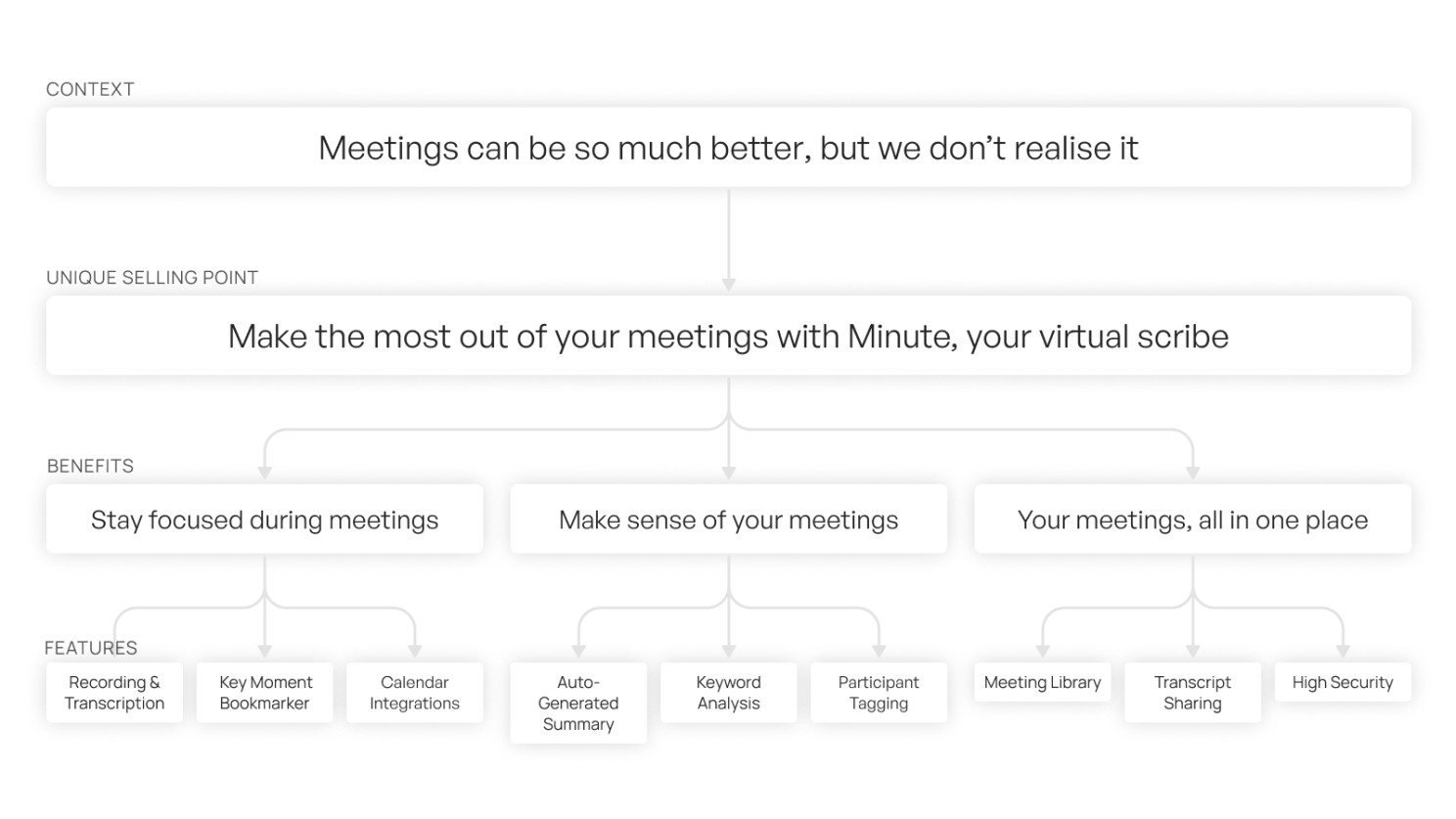
This is a versatile framework that can be applied anywhere:
Sales Deck

Website
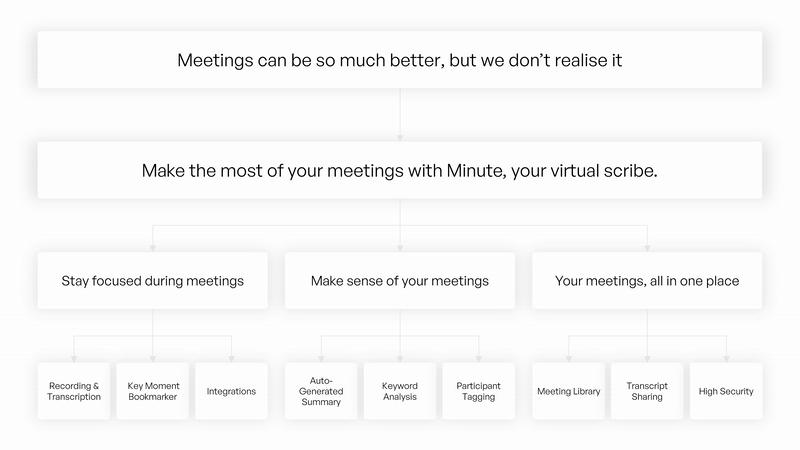
Expanding the Tree
It doesn't end here. You can add more layers to your Christmas Tree as long as it supports the layer above. For example, you can bring in use cases and testimonials to bolster how your features work for your customer. Or if you think that your customer cares more about the practical uses of your product rather than its features, then you lead with use cases first.
The Christmas Tree framework teaches you how to think, not what to think. Feel free to change it up as long as you’re following the general principle - focus on what your customer cares about (star), and communicate it as clearly as you can (tree).
